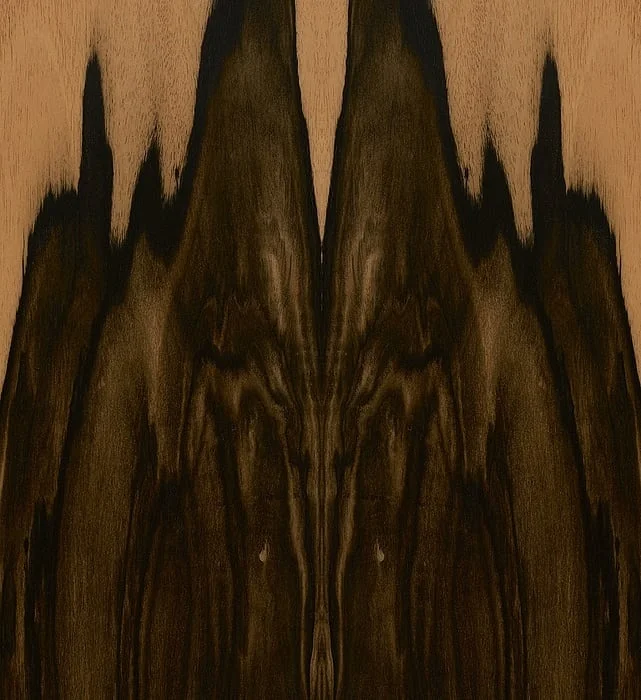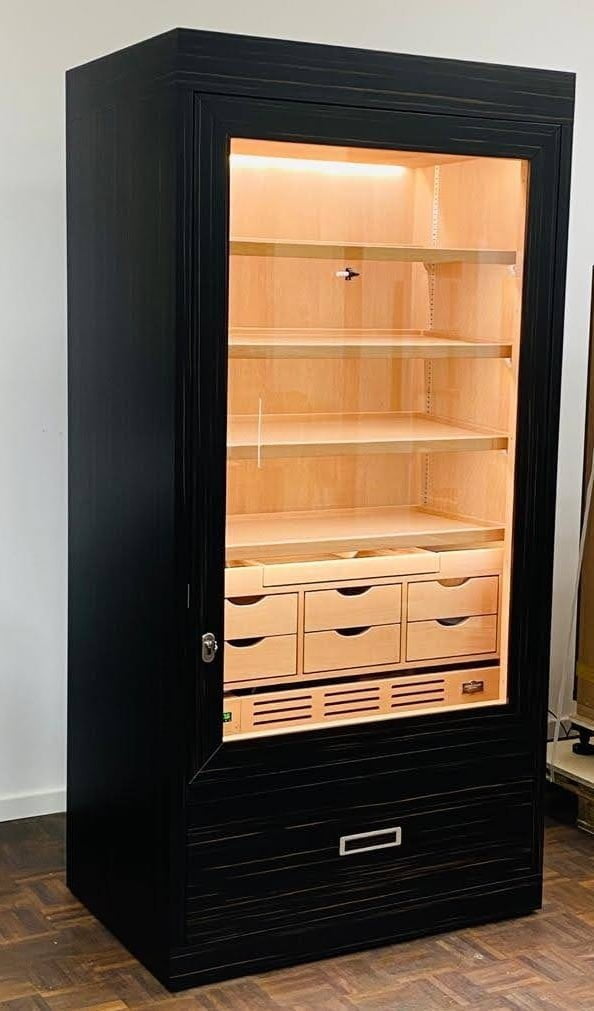African Ebony
Trade Names: African Ebony, Black Ebony, King Ebony, Gabon Ebony.
Country of origin: West and East Africa
Occurrence: African Ebony grows preferentially in coastal regions of West and East Africa and consists of various Diospyros species. Madagascar alone is home to a large number of different species. Furthermore, occurrences in Nigeria, Gabon and Angola are known. The botanical name of this genus is derived from Greek and means „food of the gods“ (Greek Dios = god, Spyros = food).
Uses: Finds use in the craft of carvers and sculptors. But also has great importance as veneer and solid wood, as well as in the construction of musical instruments (e.g. wind, plucked and stringed instruments). In the veneer sector, African ebony is used only in high-end project, ship and aircraft interiors due to its extravagant beauty and high prices. Since each trunk has a different pattern, the products made with them are extraordinarily individual and unique.
Character: The dark gray to yellowish sapwood is five to nine centimeters wide. In strong demand, on the other hand, is the even, deep black heartwood, which is very durable and sometimes contains gray-black zones. In veneer, however, it is the strong contrast between the light sapwood and dark heartwood, and the blending of the two, that results in particularly interesting contrasts and textures.
Special features: Ebony was already in early historical times because of its color and technical properties one of the most valuable woods at all and was traded as an exotic treasure far beyond the borders of the producing countries. Already the Egyptians used it for valuable works and also in the Old Testament (Ezk 27,15 EU) it is mentioned as a tyrian trade good. However, the most famous mention of ebony in this country is probably the story of Snow White, whose hair is described as being as black as ebony. In mythology and folklore, various magical effects are attributed to ebony. For example, it is said to prevent evil spirits from entering homes, and weapons made of ebony are said to be able to wound demons. Magic wands are often made of ebony, and magical objects are said to be kept in ebony caskets to retain their power.
read more
read less


Cigar Cabinet from African Ebony
The genuine African ebony is now very much threatened by massive deforestation. The veneers still available on the market often have an unverifiable origin and are of poor quality. Therefore, we have decided to use a composite veneer, a real wood veneer from HWB. Beautiful and sustainable.
Natural product wood
Wood is a natural product, which can has colour differences and growth-related irregularities. Deviations in structure and colour are a quality feature for real wood. Growth, colour, structure and grain are unique in every tree and make every Gerber Humidor unique!
Digital illustrations of the wood samples are always only indicative picture and do not provide a guarantee.
Not all woods are available at all times and suitable for every Gerber Humidor. Please do not hesitate to contact us for further information.
